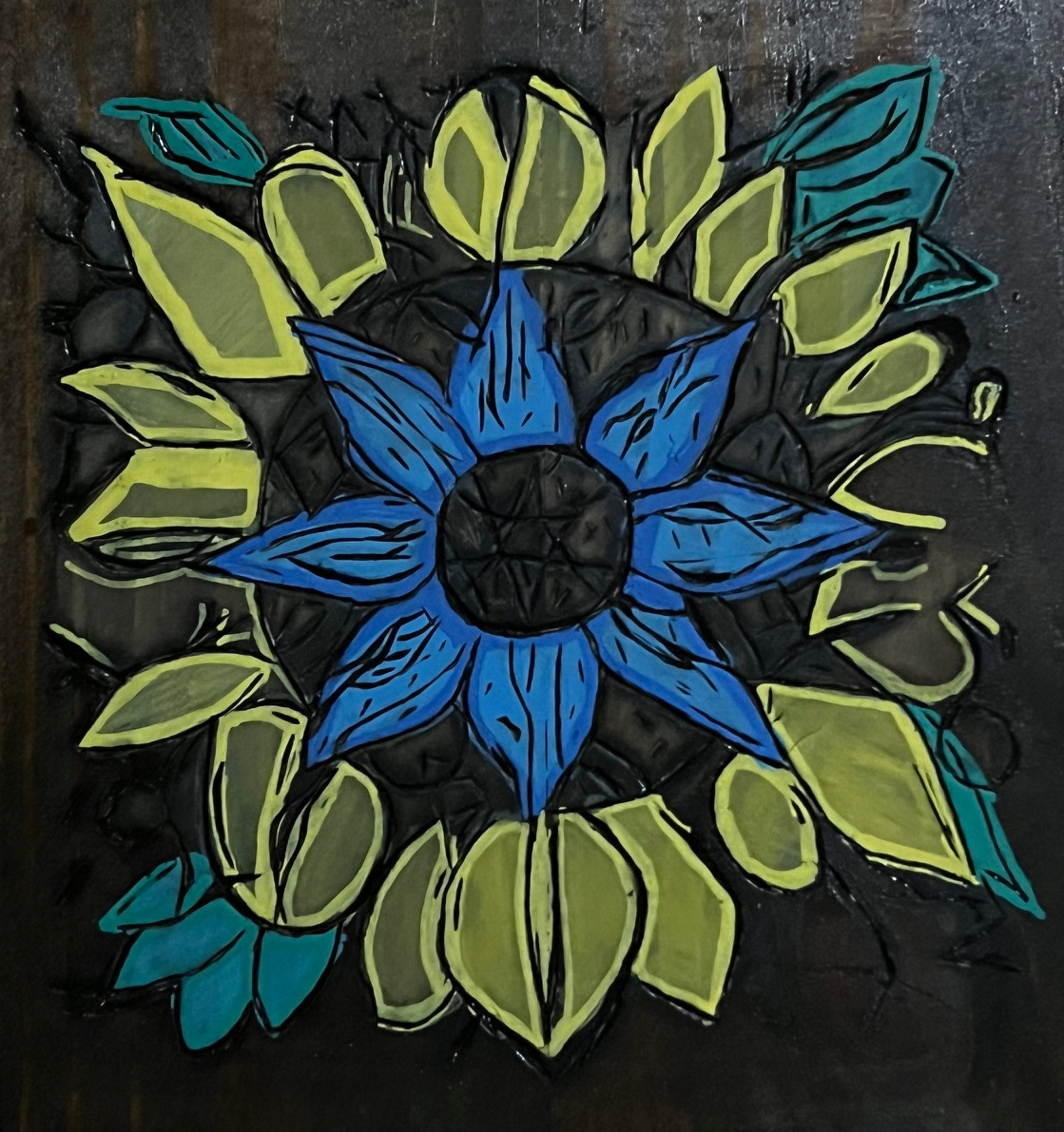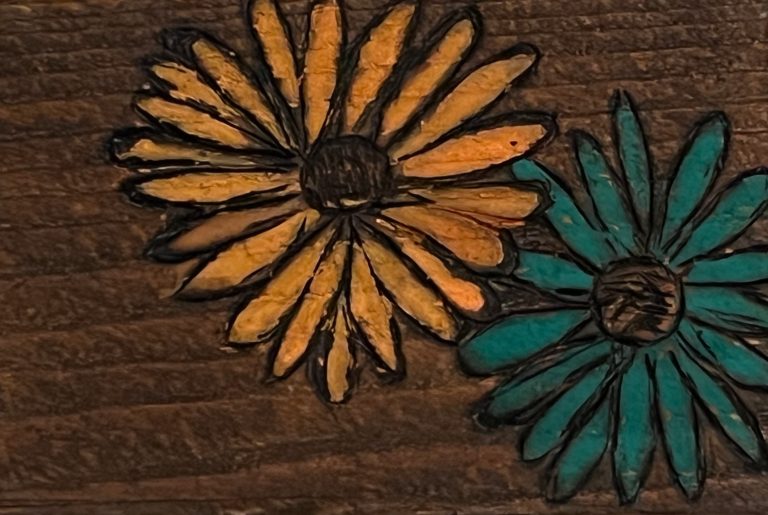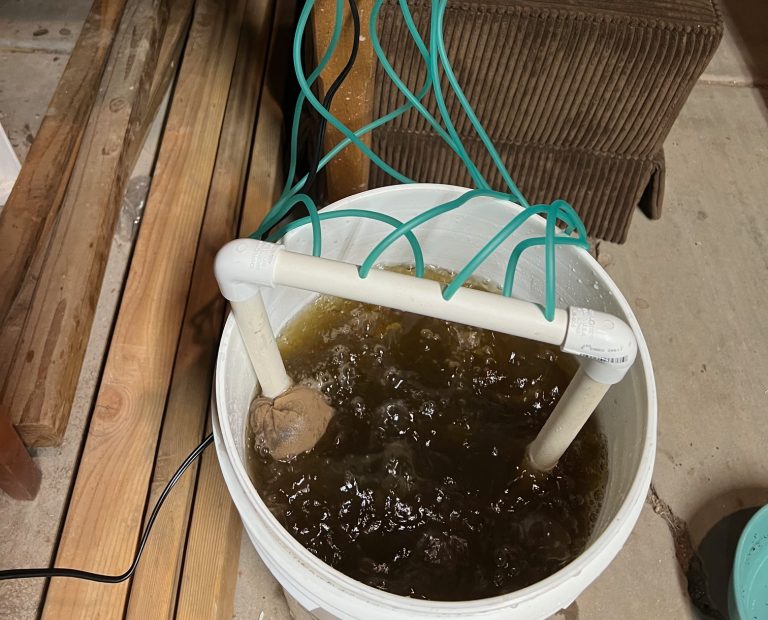01b How does my wife handle me?
Greetings to all of you in cyberland! Today is Monday and I have not done my “weekly” blog post yet. This is as much to help me develop a good habit as to document my activities here, mainly about gardening, but the idea is to “live better in the desert” so I reserve the right to ramble about anything I want, ideally related to making life better in way or another, and you may reserve the right to not read my ramblings =) Deal? Ok, today I want to talk some about my wicking bed design, I’m spontaneously calling it the “sausage tek” wicking bed. Maybe I will change that, who knows? Of course, I will go over what is going on in my garden, post a couple of pics, and lastly, I want to diverge from gardening for a bit and talk about Raspberry Pi. Hungry yet? You shouldn’t be.
The Sausage Tek wicking bed is essentially mimicking a device I saw in a video on YouTube, which used these things that are available in Australia I believe. Without reviewing the video, or doing any extra research at the moment, I’ll explain what I understood from the video, beginning with what a wicking bed is in the first place.
A wicking bed is a technique used to reduce the water requirements for growing plants, as well as make life easier for the gardener (once it is built.) They are essentially a self-watering pot, but as you will see from the one I am building, they come in all shapes, and sizes and with many different techniques. I have built one before, and I did it like this:
I took a 55-gallon plastic drum that is food-safe and cut it in half.Taking one half, I drilled a hole in the side to be used as an overflow.I placed several feet of 4-inch perforated plastic irrigation pipe (I think that is what it is called) in a coil at the bottom to create space.I attached a bulkhead to the hole, and on the inside I put a half-inch pipe (with holes in it) to allow water to leave the bed, and on the outside I put a piece of half-inch pipe, connected to a 90-degree elbow, with a second piece of pipe, creating an overflow which I can control the level of the water (pictures will be included.)I used a two-inch pipe that ran to the bottom and into the 4-inch irrigation pipe to allow me to fill the reservoir from the top, and place a cap on top to prevent anything from getting inRinsing first, I put a layer of horticultural pumice about 10 inches up the containerI used both hardware cloth (1/4 inch I believe) and a layer of perlite to separate the reservoir at the bottom, and the soil on topThere was enough room for about another 10 inches of soil, and I used a mixture of potting soil, compost, worm castings, and Dr. Earth organic fertilizer.I planted one tomato plant in the middle, which I had grown from seed, and my wife and I put an assortment of seeds in the soil.
My first wicking bed from September 2023
We finished the first wicking bed in time for the fall season here in Arizona, and as of today, I am just getting my first red cherry tomatoes off the plant. There are tons of plants around the tomato, most of which I can not identify since we put so many seeds in there, and many of them I have never grown before. There are a couple of beautiful amaranth plants and some arugula. I am very happy with the results, as I have forgotten it for over a week without any problems. I think it is also helpful for it to go through cycles of drier and wetter, but this is just a feeling.
There will be some differences in the design I am working on right now. Most of my changes are due to the information I got on the wicking bed video I have posted on my site. The important information I gleaned from the video was that media with smaller particle sizes tends to wick better, such as sand with fines or small particles in it, but if you filled the whole bottom with it, it would not work so well because the sand also has a water holding ability to it. So the idea is to have some columns of sand surrounded by available water. This is why I call it the “sausage tek”.
Originally I was planning on using weed blocker fabric, as many people do, to separate my reservoir and my soil, but now I believe this is unnecessary, and at this point, I do not plan on creating a typical separation. I have always wanted my roots to be able to enter the reservoir because in my mind these are like plants here in the desert that put down tap roots long enough to make it into the water basin below, allowing them to thrive through the summers. This may affect the way the wicking beds work in the future, but I have not been working with them long enough to know. For example, after growing for a season, I will have a lot of root mass down there, and the plan is to chop the plants down and plant back over them, but if enough root mass grows it could affect the bed’s ability to wick, maybe? My gut feeling is that it will be fine.
What I am going to do with the weed blocker fabric now, is make a 12-inch “sausage” of lava sand (with fines) that will be supported and surrounded by horticultural pumice. I may make one column with lava and one column with “Santa Cruz play sand” next to each other to make sure it works. The play sand has been rinsed of fines, and I have tried to test the wicking abilities of these two media on my own. I took some mason jars, put the same amount of water in them, and then filled them to the same level with both lava sand and play sand. The play sand immediately pushed the water up to the top, barely holding any, and after many hours the lava sand did wick a considerable distance.
Maybe the best idea would be to mix them, I am not sure, but since it will be difficult to change when I am done, I may do a combination of ideas to just try to make sure it works as best as possible for my wife. I made my first video about this today, describing where I am in the process and what I have done so far, including mistakes and problems I have run into. I intend to show as many mistakes and problems as possible because I think this is when we learn best. If I just show how I would build one in an ideal world where ihome/t all works out, I think there will be less value to that information.
I have this idea that I want to put some wicking beds at some homeless camps and see where we could go with that, especially if I could find the right people who would appreciate and not destroy them. It is worth a shot, and hopefully, I get a chance to do that. If not, it is an idea I would love if someone stole from me, because the homeless problem here is just getting worse and worse, and it really wouldn’t be hard to produce at least something on their own. (I’m thinking strawberries might be a hit?) Maybe I will drop by each one every week and fill up the water.
As for the rest of my garden, my okra is doing well especially since the grasshoppers have stopped destroying it. I just eat it raw and fresh in the garden to encourage it to produce more usually, but I’d like to use it in a meal and see if my wife likes it. As I mentioned, I have some cherry tomatoes that are ripe today, my first ripe tomatoes since we moved into this house. I am saving one for my aunt, and I am dying to try one but home/I want to get a good picture first. The thing that I think is a melon is getting nice and fat, like the size of a small plum right now. I have a second tomato plant that is growing in the ground that has a handful of small green tomatoes on it, and I have these purple bean plants that are making beautiful beans. I ate one raw and it tasted just like a green bean.
That is about it for the garden this week.
Raspberry Pi
On to something completely different. I am not referring to a delicious pie made from raspberries. If you have never heard of it, I am referring to a “Raspberry Pi” which is a single-chip computer. Everything that a regular computer has, such as a video card, wireless modem, etc, is all on one small chip. They are amazing. I fell in love with them around the same time I fell in love with bitcoin, and I knew there was something similar that appealed to me about both of them but it took me a long time to realize what that is. Not the point I am trying to make, however.
Today I spent some time assembling a case for a Raspberry Pi 4 with 2G RAM, which at this time I will be using to practice programming with Python and learning about various subjects. I am specifically thinking of parents right now because my sister has two young children, a boy who is 2 and a girl who is not quite 1 yet. I am a very proud uncle and am always trying to think of things that would be good to teach/expose the kids to see what piques their interest and try to support that as much as possible. These things are a bull’s eye for kids, and in fact, that is what they were designed for I believe. They are as simple as possible and were made to teach people, including young people, to program in an environment that makes it as straightforward as possible.
I have some experience with Python, over the years. When I was a young teenager, I was able to sit in with some Python programming classes at the U of A. I never got great at it, but now and then I go back and play around with it. It is much easier to understand and learn than any other scripting or programming language I have ever encountered. Right now on Amazon, for Black Friday, they have some good sales on kits you can buy that go along with the Raspberry Pi. They have hundreds of parts and include things like sensors, a motor, a little keypad, and all kinds of things, and this kit includes a guide with hundreds of projects you can do. These projects teach you to put together simple electronics as well as do some basic programming to interact with the hardware.
I think this is a great idea for any parent to try out with their kids and see if it is something that interests them. For less than 100$, there is just SO MUCH you can do, and for anyone interested, there is no better way to learn about computers, electronics, and programming in Python, than buying one of these kits online that go with a Raspberry Pi. You can use any version of the Pi, it doesn’t have to be a newer one like the 4 that I got the other day. I also got a Raspberry Pi Pico, which is not a fully functional computer like the Pi, but a simple controller that you can use for these projects. I do not know which one I prefer to learn with yet, but I ended up with both and will be reviewing them as I use them. I do not get any money from linking to these products, or anything like that, but I will include some links to show you what I mean, but I am not necessarily recommending this specific kit over another one.
Actually, had I not bought the Raspberry Pi or the case and just stuck with the kit and the Pico, which should be all you need to get started, then it would only cost about 30$ right now! There is nothing I can think of that packs a greater educational punch and is so dynamic in that it teaches about so many topics. I know there are kids out there who would just love it.
This is the first circuit design I did, the first one in the guide and it’s the most simple. It is just a machine that turns a light on and off, and then you write a simple program that cycles on and off, blinking the light. I put this first one together and tested it and – WAH WAH – did not work. I’m going to send an email to the support team with a picture of my circuit board and see what I did wrong. I’ll keep updating the blog.
So I will probably not post for the next week because I am going out of town for Thanksgiving, and to see George Clinton in LA. My mom brought me a bottle of this Alma Tepic to try and I love it. We generally do not drink hard alcohol, but for vacation, and this drink, we will have to make an exception! As far as I can tell, it is made from chili. It has the most amazing smoky aftertaste and is the only alcohol I’ve ever drank 100% for the taste and not the effect. I can’t imagine drinking so much that you throw up, that would likely be an uncomfortable experience! Happy Holidays!







